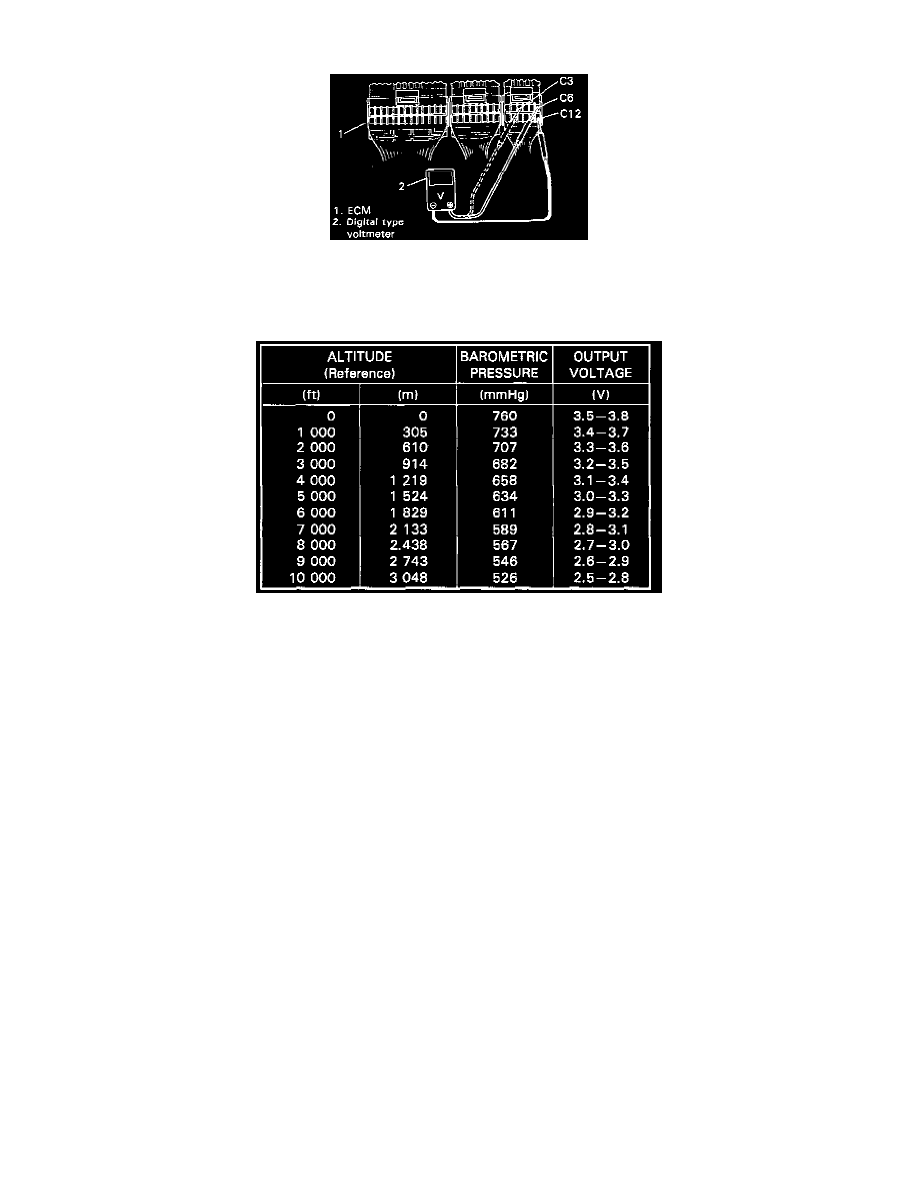Esteem L4-1590cc 1.6L SOHC 0 MFI 16V (1995)

Manifold Pressure/Vacuum Sensor: Testing and Inspection
1. Remove ECM according to previously outlined.
2. Connect couplers to ECM securely.
3. With coupler connected to ECM, connect digital type voltmeter as shown and check that ECM supply voltage 4.75 - 5.25V is applied to coupler
terminal C6.
4. Check output voltage at coupler terminal C3. Note that it varies with atmospheric pressure and altitude. Also, start engine, if it can, and check if
output voltage varies.
Output voltage (ECM supply voltage 4.75 - 5.25V, ambient temp. 1O - 40°C, 50 - 104°F)
NOTE: Note that atmospheric pressure varies depending on weather conditions as well as altitude. Take that into consideration when performing
above check.
If check result is not satisfactory in previous step 3) or 4), check MAP sensor and its circuit according to Diagnostic Flow Chart for Code No.31.
NOTE: If output voltage does not vary when engine is started, it is possible that vacuum hose and/or filter are clogged. Clean them. Another
possibility is that filter in MAP sensor is clogged from freezing. If it is suspected, leave it at room temperature (20° C, 68° F) for a while and
recheck.
5. Upon completion of checking, install ECM and connect ECM coupler securely.
MAP Sensor Individual Check
1. Disconnect MAP sensor vacuum hose from filter.
2. Disconnect coupler from MAP sensor.
3. Remove MAP sensor.
